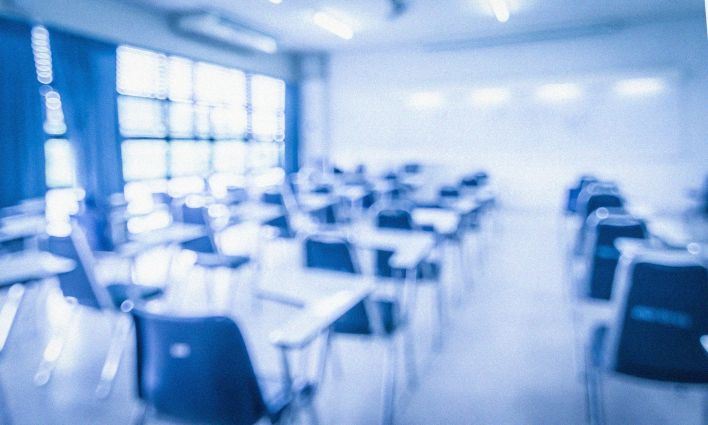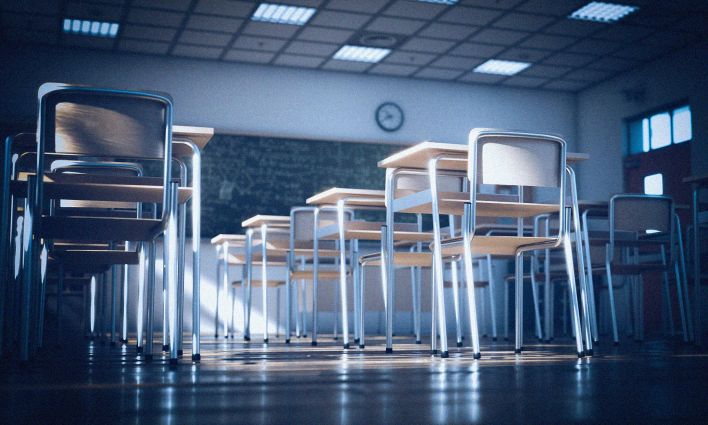As Ontario students enter their third year of pandemic education and with the province projecting a substantial fourth wave, a significant minority have elected to learn remotely. With funding that amounts to a drop in the bucket in the context of the crisis, school districts confronting another year of potential uncertainty have collapsed virtual schools, directing teachers to teach students in-person and online at the same time. In most districts, this is referred to as hybrid learning.
Hybrid learning, promoted by an American consulting firm contracted by the Ontario government to develop school reopening plans, refers to the delivery of in-person and online education to two groups of students simultaneously. This is not a conventional hybrid model, where one group receives in-person and online instruction at separate times. This is not the adult-learner model that is used in a minority of lecture-based university classrooms. This is a K-12 pandemic model that in practice requires education workers to teach two classes at once.
During the 2020-2021 school year the Ontario-driven version of hybrid learning was quietly adopted by the Upper Canada District School Board, followed by Dufferin-Peel and York Catholic DSB, Simcoe, Peel, Toronto DSB, and others. While most hybrid classrooms were concentrated in secondary schools, some districts included more vulnerable elementary students. And despite a warning issued by the Ontario Human Rights’ Commission to respect the rights of students with disabilities when planning for the school year, K-12 students in Intensive Support classes (autism, deaf and hard of hearing, physical and developmental disabilities, learning disabilities) were also forced into a hybrid model.
I have previously written about the dangers of this emergency response to COVID-19 pressures that reflected a failing plan for online education. And as we move into another school year of pandemic learning, my concerns are heightened.
Districts confronting a third year of disruption, with a mandate to deliver full-time online education, are normalizing this pandemic hybrid model. While union locals, educators, and communities have fought back and won, there is still more work to be done before we have dismantled a model of learning that robs all students of quality education.
As a parent, secondary and post-secondary educator, and a researcher of educational policy, online learning and inequality, I can offer some insight into what we have to lose if we proceed with current plans.
Students lose attention: Last year, virtual students in the largest school board in Canada were disproportionately racialized and living in under-resourced communities. This is consistent with reports from the United States that highlight similar disparities. While virtual school isn’t sustainable for many students, a dedicated teacher is the best support we can provide them during a pandemic. The hybrid model promises to split the attention of their teachers with students learning in-person. Districts defending the hybrid model often acknowledge that, while imperfect, this is a temporary pandemic measure.
But during a crisis, students need more support, not less.
We need to support educators to support students when they are needed most, otherwise we will see a growing gap in outcomes.
Forcing virtual students, many of whom are already under-resourced and confronting systemic barriers, to stream into physical classrooms creates a two-tiered system that positions them at a disadvantage that may have effects far exceeding the pandemic.
Educators lose autonomy: The experience of teaching online and in-person simultaneously when it is under-resourced and not delivered at teachers’ discretion hinders their ability to respond to the diversity of student needs. Physically, educators are tied to the screen; pedagogically they are limited in the range of ways they can engage students with content.
Teachers are experts in the classroom but they cannot squeeze water from a stone. After a report detailing “unbearable levels of stress, anxiety, and a struggle to cope with the demands of teaching during the pandemic,” we are setting educators up for failure by asking them to do two jobs at once. High-quality teaching shapes high-quality education systems that meet the needs of the whole child. We need to support educators to support students when they are needed most, otherwise we will see a growing gap in outcomes.
The public system loses credibility: Public education is not only about accreditation; it is also about learning to share social space and build common experience across differences, affirming the diversity of lived experience and cultivating democratic values central to what makes education public.
This is not to romanticize institutional schooling, which often reproduces and reinforces gender, class, and racial hierarchies, and entrenches ableism. Rather, it is to highlight the values we contradict with a hybrid model, which logistically decentres the student. When we force educators to become the focal point of a classroom, as the conduit between two groups of students, we are fracturing the learning community and applying an ideology of education that sees schools as a marketplace, students as consumers, and educators as service providers.
Some families are reluctantly and even bitterly accepting hybrid learning because districts promise it is a temporary pandemic measure. But districts can’t keep this promise if the province proceeds with their plan to make remote learning permanent without the necessary funding to deliver remote learning permanently.
It is hard, but not impossible, to offer students a dedicated teacher both virtually and in-person, especially during a pandemic when demand is justified. If we don’t fight for investments during a crisis, when we need it most, then when will we?







